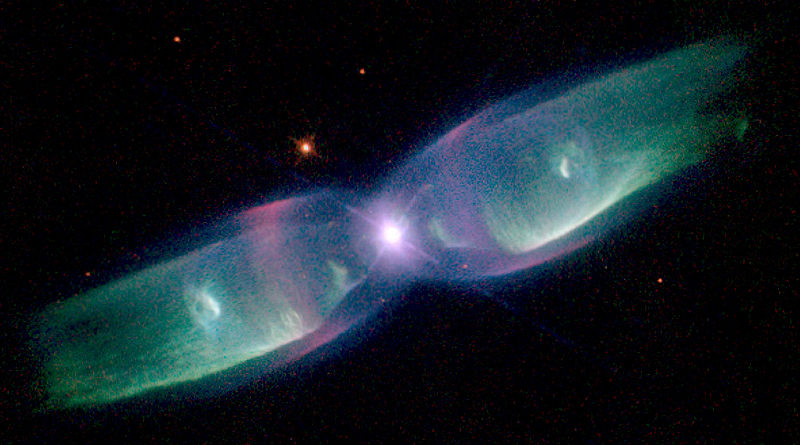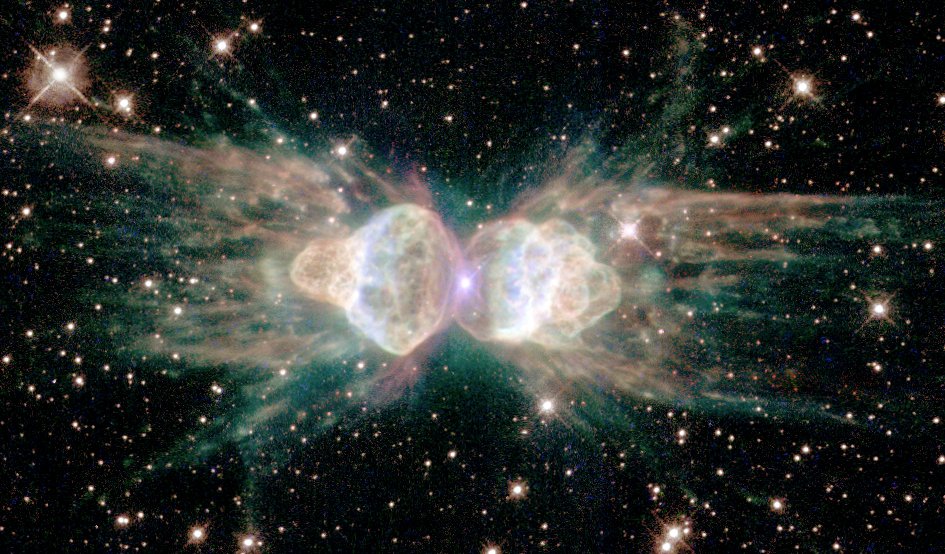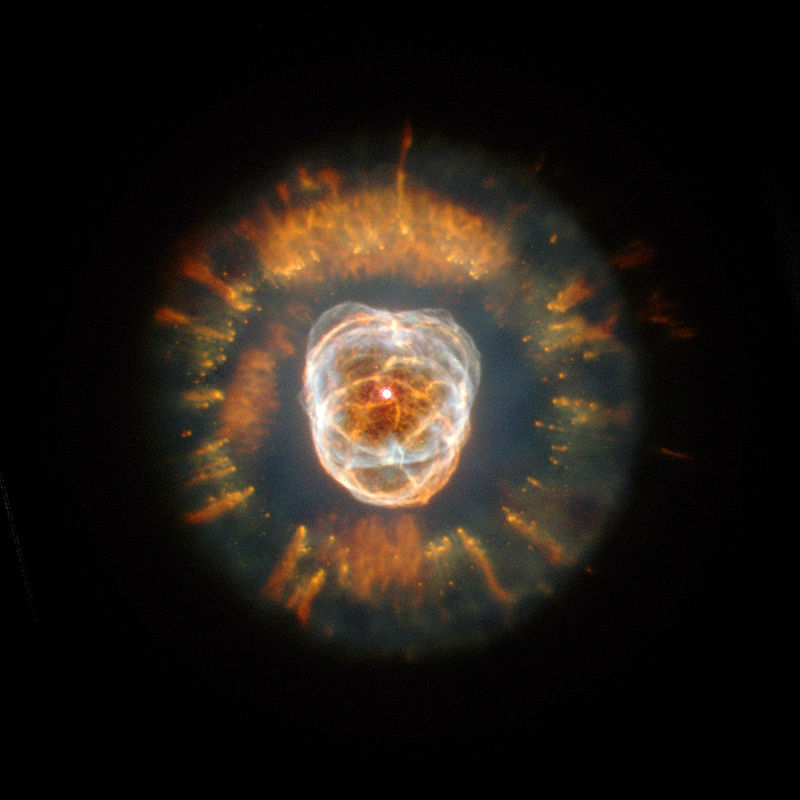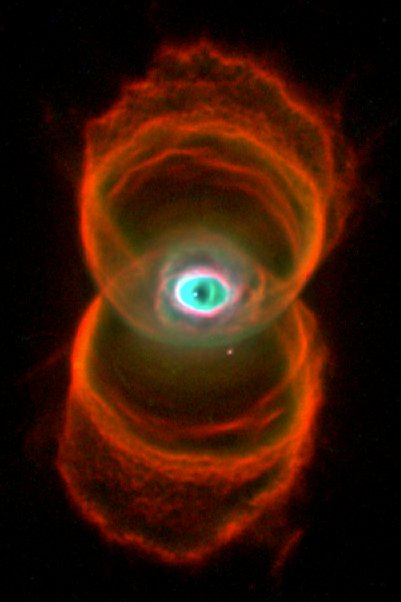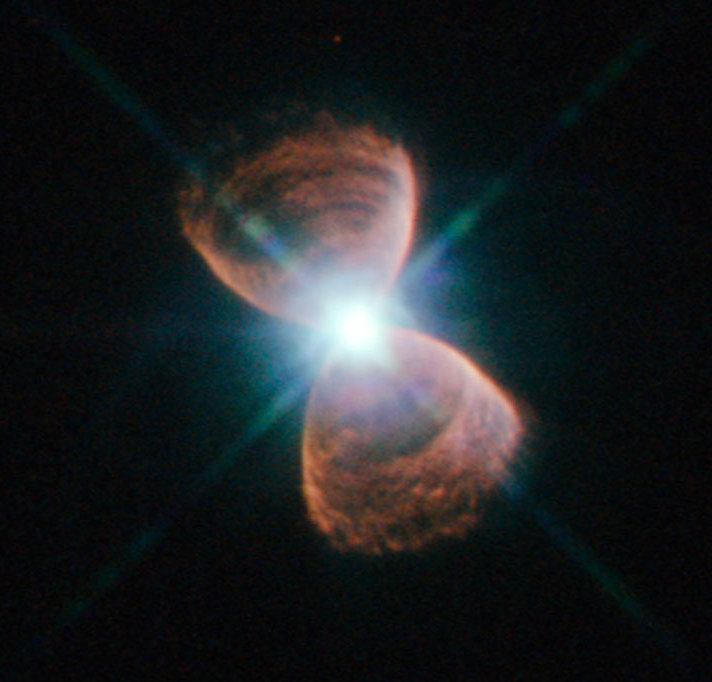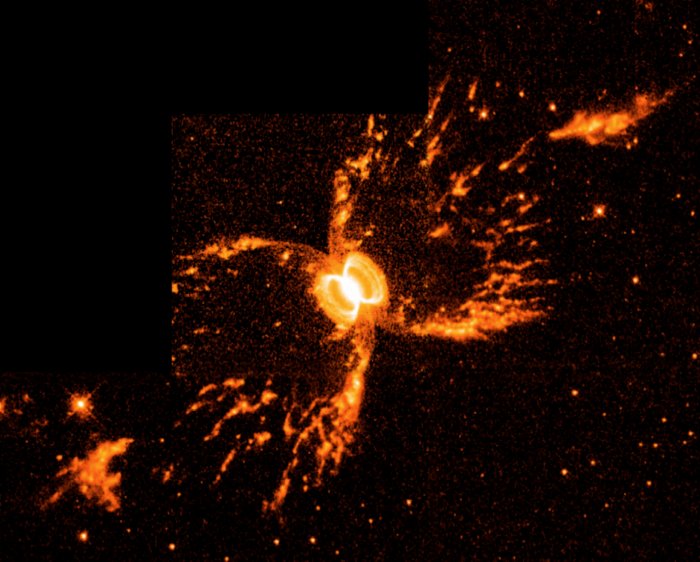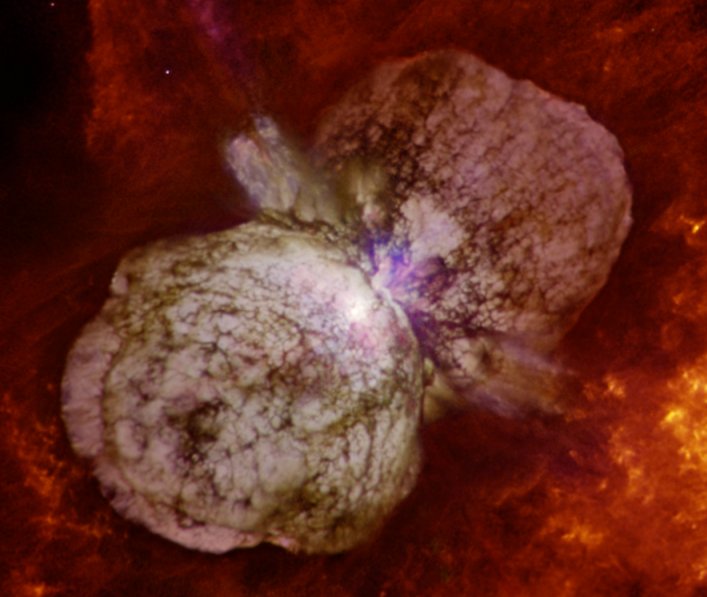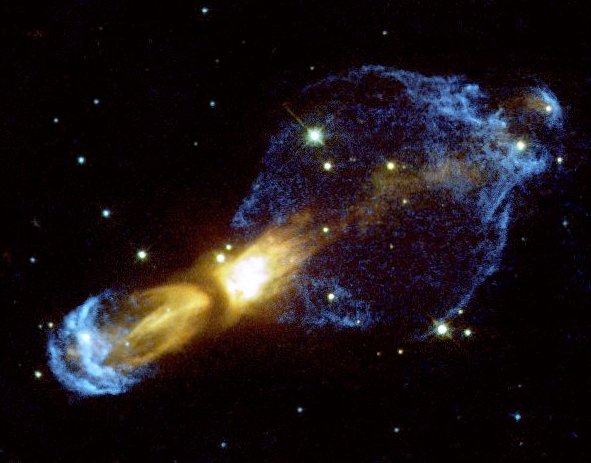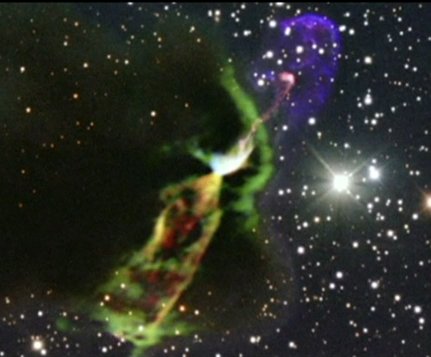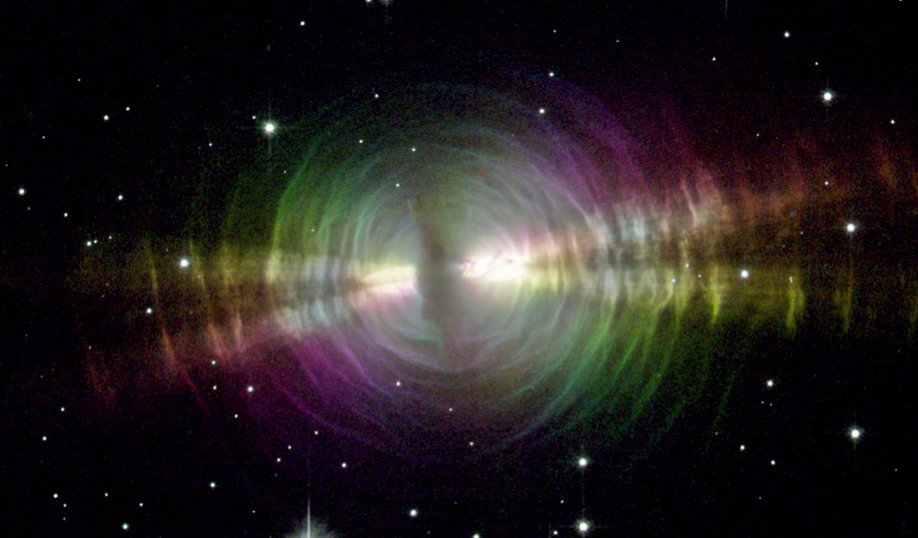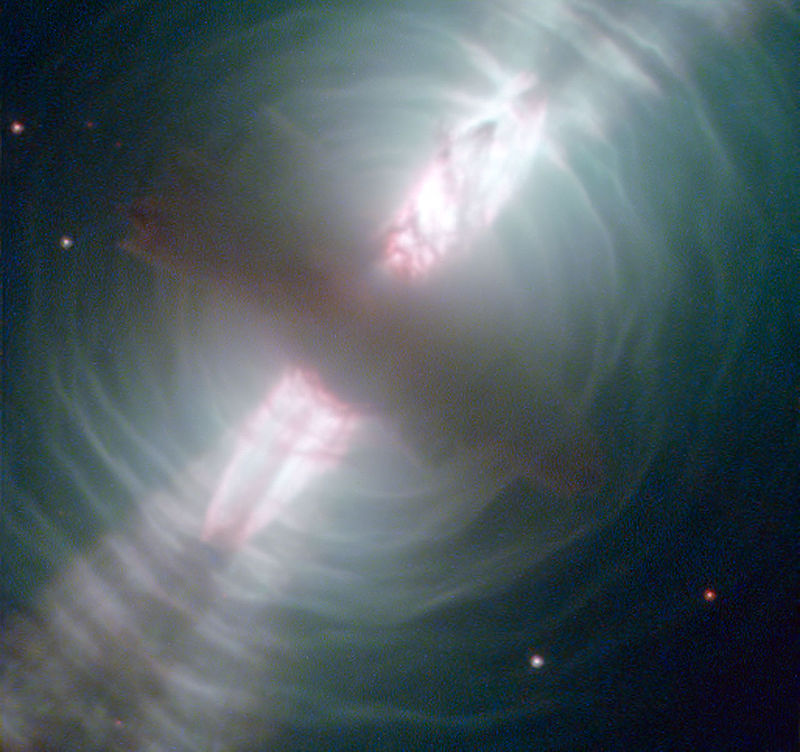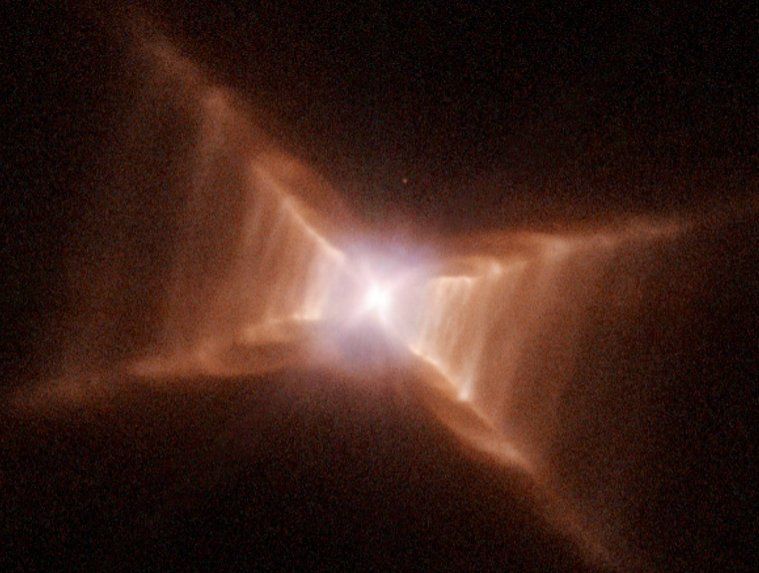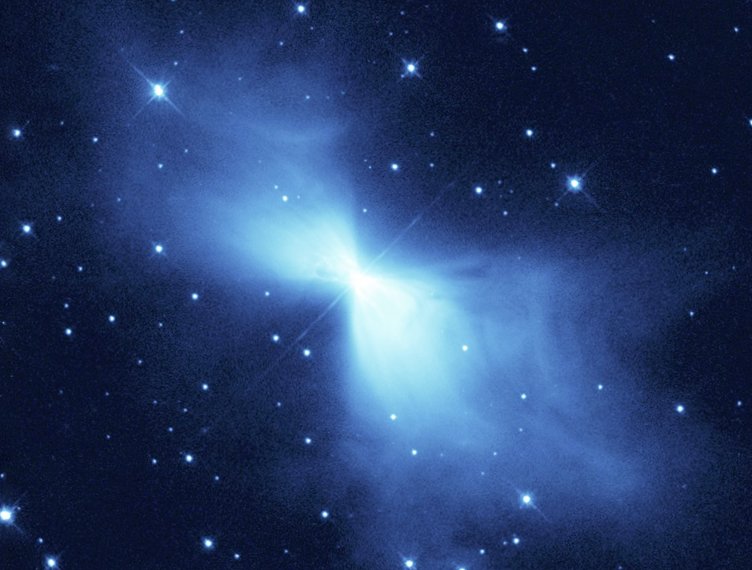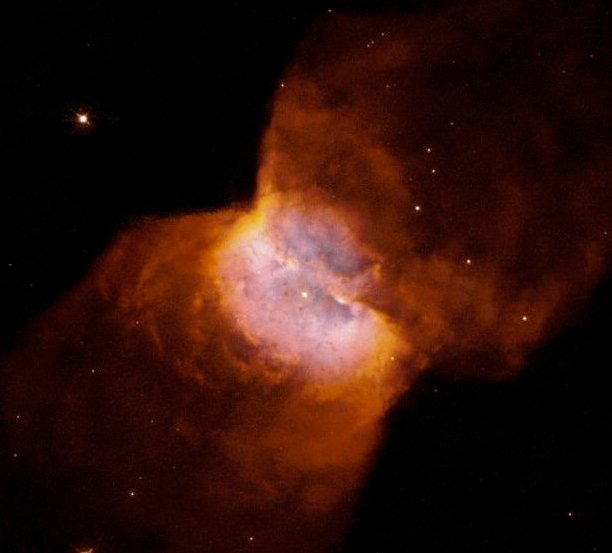Bipolar Planetary Nebulae Gallery
© Charles ChandlerThese two have a distinct, bubble-like internal structure, in addition to the outer shell.
These have the classic hourglass shape.
These are unusual in that they are not symmetrical.
The Egg Nebula is a very interesting study in the present model, as it appears to be direct evidence of a filamentary collision caught in the act, corresponding to panels 3~5 in Figure 10. The inflowing dusty plasma itself is visible on the near side (almost vertical in Figure 11, but at a 45° angle in Figure 12), which shows the ragged tail of the filament at the upper left, and organized arc structures (especially in other wavelengths1:L164) at the lower right. So along our sight-line, the filament is moving from us at the upper left, inward to the lower right, and then wrapping around behind the center out of our sight. The bipolar jets have just begun to erupt, and are in the process of merging together, but are still distinct streams. Thus this stage in the process is like panel #5 in Figure 10, since bipolar jets require annular explosions, but the charge streams haven't resolved into a single continuous toroid yet. Note that the jets themselves are just the fiery solid bodies, while the luminous channels defining the greatest extents of the "nebula" in Figure 11 are lighthouse beams that have been focused by the bipolar jets (i.e., by the curvature of photons toward greater densities, which in this case is toward the axis of the jets). The bipolar jets are expanding at ~300 km/s, while the radial ejecta are expanding at 20 km/s,1:L164 proving that the conditions producing the bipolar jets emerged later, as the present model predicts.Figure 11. Egg Nebula (CRL 2688). The false colors denote the polarization of the particles emitting the photons.
The Red Rectangle Nebula might be the same thing as the Egg Nebula, just a little bit further along in its development, and with a greater angle between the binaries. Thus the stepped gradient might be the concentric shocks from preliminary explosions, though they have been perturbed by the bipolar jets, stretching circles into rectangles. There is no apparent inflowing dust lane, suggesting that the implosion has already completed.
These are poorly defined, and are not specifically treated in the present model.
References
1. Sahai, R. et al. (1998): The Structure of the Prototype Bipolar Protoplanetary Nebula CRL 2688 (Egg Nebula): Broadband, Polarimetric, and H2 Line Imaging with NICMOS on the Hubble Space Telescope. The Astrophysical Journal Letters, 492 (2): L163-L167 ⇧ ⇧











